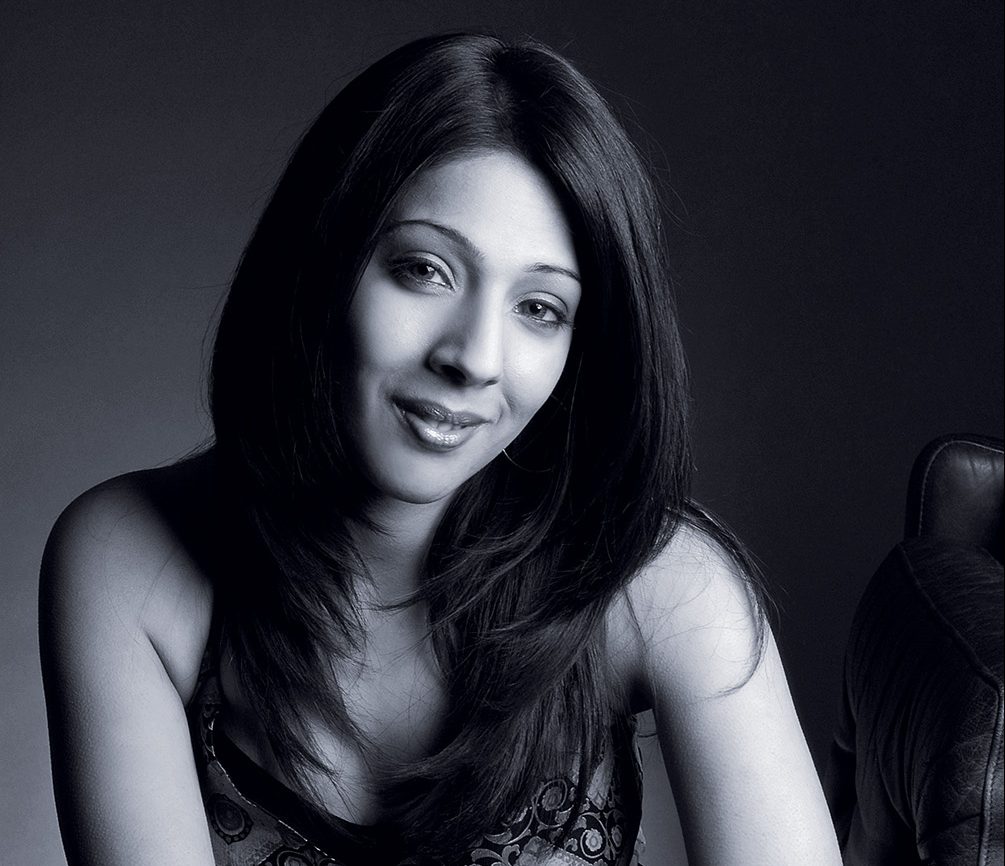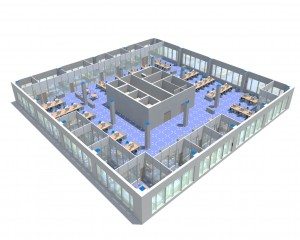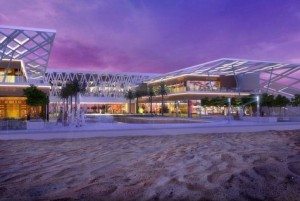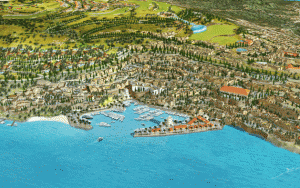The Globetrotter
Jason Saundalkar talks to Sharon Jutla, founder of Sharon Jutla Interiors, about her career and inspiration, and her recently opened design consultancy

Sharon Jutla is a British architect with over 18 years of international experience spanning Asia, Europe and the Middle East. She considers herself a designer, entrepreneur, influencer and educator, and if you’ve been following Middle East Consultant over the last few months, you’ll have seen this globetrotter’s name pop up from time to time.
In fact, Jutla has over 14 years of experience in the Middle East, and after being bitten by the entrepreneurial bug, she recently set up Sharon Jutla Interiors (SJI). The design consultancy is what she currently lives and breathes. We talk to her about her background, inspiration and goals.
MEC: Give us a snapshot of your life and career.
Sharon Jutla: It wasn’t long after I left university that I realised it did not matter how good my design education was – we never stop learning, and later we never stop teaching. Throughout my career I have worked with some outstanding mentors, which is why I am here today.
My career has been rewarding, it has given me the opportunity to work in multiple sectors across the globe. It’s been a learning curve for me over the last 18 years, and what I have learnt is that, fundamentally, every project is building spaces around people that use them. As an individual, whether designing a hotel, restaurant or stadium, I love to bring passion to each of my projects, with a distinguishable stamp and the conceptual flair that people can enjoy and experience.
Each project has challenges, and I feel I am always learning something new. What was once daunting to design is relatively easy for me now due to my experience – I’m able to achieve objectives quickly that reflect the qualities, values and aspirations of clients.
For many years, I was known to live out of a suitcase (not great), but travelling the world for work has given me open insights into the realities of the design world, which I believe is an achievement in itself. The places I’ve been, the people I have interacted with and what I have seen about how business is conducted is a book of stories that needs to be written.
What inspires you and spurs your creative thinking?
Life. I am inspired by everything, every day – wandering around aimlessly and public solitude are important parts of my creative process. New things, new people and self-belief – it can even be something simple like colours of a sunset. Beautiful objects are an endless supply of inspiration as well. I am a very visual person, so images often give me the map to my final design. Art and photography, whether I’m wandering round a gallery browsing some fantastic art or looking through online photography sites, these can really spark my imagination.
I often draw on historical references and reinvent them with today‘s materials in a timeless and elegant way. Fashion as well; as an interior designer I’m always looking to the same colour forecasting sources for inspiration. New seasons can be a great source for themes – from New York, London, Milan and Paris Fashion Week to trend forecasters themselves.
Are there any designers that inspire you with their work or approach to work?
Good artists inevitably take inspiration from the world around them, not just what’s near them or what is on trend. There are many designers that I admire and that inspire me. The two that stayed with me from a young age are both my grandfathers, who were also in the construction industry. From a really young age, I was always watching, observing and inspired by their talent, hard work and dedication. I felt like they could make anything.
I often turn to and admire several other designers, including Philippe Starck, Marcel Wanders and Jean-Louis Deniot. With Denoit, I’m fascinated by how his decor is what he calls his playground. His approach to creating electric and emblematic interiors and never sticking to purity of style is incredible, and I‘m inspired by the use of history and references of his contemporary work, which produces timeless spaces.
Which are your favourite countries to work in, and why?
Every country is different – the culture, the people, the buildings, the way business is conducted and the way spaces are occupied. In our everyday lives, we live in spaces that are active, changing and dynamic. When designers create interior spatial designs for various types of uses and experiences, they consider both the aesthetic qualities of a space and how people experience interactions and sensations within the spaces. However, people’s experiences are subjective. These are experiences people have in the moment of living, both consciously and unconsciously, in interaction with the space and others in the space.
Designing with culture in mind is a way to express those beliefs and lifestyle factors that make you who you are. The statement that culture makes in your space has the ability to create a domino effect that can be extremely positive. Bringing culture into spaces is a personal step that should reflect your deepest cultural roots and take time to emphasise what’s most important to you through interior design, giving your residence a personal touch that puts your passions on display and speaks to your unique life. So for me, every country and market is unique and an opportunity, there‘s no favourite.
Are there any specific types of project you are keen to work on (homes, offices, etc)?
Beauty is in the eye of the beholder, it is often said, and never more so than when it comes to buildings and spaces. There is no building or space I look up to, but I believe design is around us everywhere and every day in our daily lives. I am lucky that throughout my career I have had the opportunity to be exposed to every sector, ranging from sports, residential, hospitality, retail F&B and commercial, including large-scale mixed-use developments not just in the Middle East but worldwide. Each and every design, no matter what the sector or discipline, is unique in some shape or form.
The GCC market has been tepid recently. What drove you to set up your own boutique consultancy in these market conditions?
When is the right time to set up a business? And why not the current market? To do anything entrepreneurial, I think the biggest part of the battle is having the persistence to break through all the obstacles and not being influenced by challenges. We are each capable and deserving of living a life that is successful, rewarding and balanced. The biggest challenge is in knowing what that life looks like, no matter what the circumstances are. Knowing this, we can define the steps we need to take to make it a reality. I am always dreaming big and I never get discouraged by anyone or anything. I network and collaborate, I share my passion and listen to other people’s stories. Every minute is an opportunity, and I believe the more you share your work and inspire your surroundings, the more opportunities will come your way.
Assuming you’ve been given a blank canvas to work with, how do you approach a project and connect client aspirations to what you deliver?
One of my key design philosophies comes from stepping outside of people’s comfort zone and making a difference in the way people use, live, learn, experience and feel spaces. As designers, we need to solve problems and at the same time give that creative flair that a client seeks. Regardless of your style, design should have a personality that needs to be a strong concept that resonates with your client.
Clients love my ‘concept and story’ model because it enables them to have a genuine emotional connection with what we’re doing. They call me the storyteller – my job is to help clients materialise their story, not mine. It’s why I love my job. I get the chance to listen and know more about them, their passions and beliefs and most importantly their dreams and desires, and reflect the environments that make them happy. By listening to their story, I gather the memories, moods and philosophies that make their lives unique and create the most breathtaking spaces. After all, the world would be a boring place if we all had the same story to tell. Therefore, my spaces are all different and unique. I often get asked what‘s your design style, but it‘s really about what‘s your story. Your story creates the style.
What are some of the key services you offer through your boutique?
Sharon Jutla Interiors (SJI) is a boutique design consultancy that offers bespoke design services in the residential, hospitality, F&B, commercial, retail and entertainment segments. We offer everything from strategic briefing and branding, feasibility studies, space planning, interior design, interior architecture, FF&E specification and procurement, OS&E, artwork and accessories, turnkey projects and client representative project management. We have collaborations and tie-ups between operators and clients for new sites, and assist in collaborations with funding and investment – this is something I have been doing for many years now.
What challenges do you face, and how do you overcome them?
Competition, when design should be more about collaboration. Who does not have a competitive streak in today’s ambitious age, where opportunity is what individuals look for? To me, the operative line is challenging competition in adversity. I understand the importance of pushing limits in order to attain an efficient, effective and result-oriented product, but the method involved in the madness describes one’s attitude, which ultimately decides the approach. Being competitive is the basic credential any working professional should possess in today’s demanding set-up, but at the same time I believe there is more to it than just being competitive. It’s about respecting the work environment, fitting into a situation and not dictating it that makes competition a playground, where I can decide my own pace in this mad race.
How do you address unrealistic clients, budgets and other common issues?
As an interior designer, we all have a list of challenges we face all the time. While every designer faces unique challenges on each project, some typical difficulties affect everyone in the industry. I think the biggest challenge facing designers today really is cost, and clients who want instant results. It has always been an issue, and it will be an issue for eternity. Clients drive the industry. At the end of the day, we can design and build the best, but if it doesn‘t sell, we‘re not in business. Clients are now asking for more technology, they‘re asking for better price point for the products, so the challenge for designers is incorporating new technology. We then have to ask, how do we incorporate safety? How do we incorporate scalability and eco design into an area which is very competitive? And how do we do it at a budget price?
So that‘s really one of the biggest challenges – how can we encourage our clients that this process of selecting the cheapest will not result in value for money? We must educate them, and we have to resist the urge to undercut our competitors. At the end of the day, we all need to also remember that fees = salaries.
Which countries in the GCC have the most potential for your business? Outside the GCC, which markets are you eyeing for growth?
I’m quite busy in a few places within the GCC at present, mostly in Dubai, Abu Dhabi, Oman, KSA and Kuwait. As the saying goes in business: ‘It’s not what you know, it’s who you know.’ There are a number of markets outside the GCC where I am currently working on some great projects – a couple of hotels in Europe and America, private residential for investment bankers in both London and India. There‘s no particular market that stands out in my business plan, it’s more about the client and project and the opportunity that comes my way.
What’s your approach to sustainability on projects and in your consultancy?
Our future depends on sustainability, and hence our projects. We only have one Earth, so we must find ways to reduce our impact on the environment, by using materials produced in a socially responsible manner, such as furniture and products from sources that promote safe manufacturing processes and socially just business practices. Reducing waste by using reclaimed or recycled materials is also a must. Antique and vintage furniture and decorative items can be repurposed, refinished or otherwise refurbished to give them new life. For the truly environmentally conscious, tiles, carpets, fabrics, even sinks and counters can be made from recycled materials.
For me, sustainable interior design opens the possibility to bring the special feeling of the material into the space. Sustainable design is still primarily about functionality and form, but the experience people can get from material adds a new dimension to creativity. I try to interpret materials in new ways. I always try to change things a little and find a different artistic expression.
That’s what drives us to be unique in something. We look for materials that are made in unique ways, in that they look unique and people can see and feel the uniqueness in them. Therefore it’s important for there to be a good story behind the sustainable material, something unique and distinguishable about it.
























